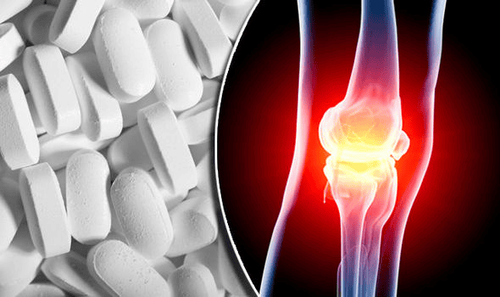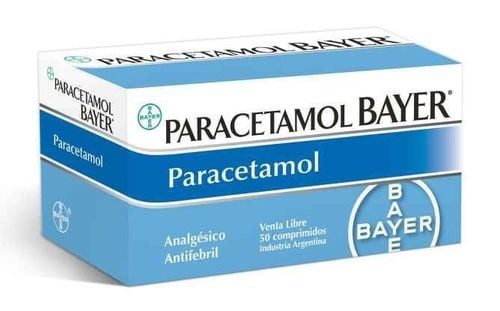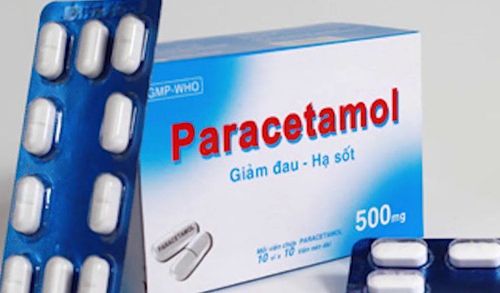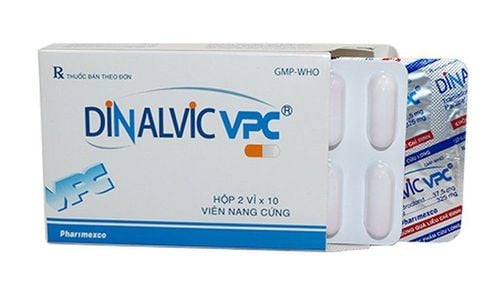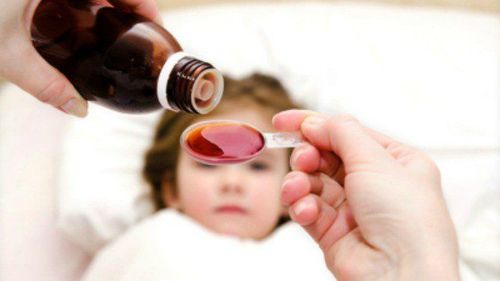This is an automatically translated article.
Dolodon medicine has the main active ingredient is Paracetamol with the content of 500mg and other excipients in sufficient quantity. This is a non-steroid drug that is used to reduce fever and relieve mild to moderate pain.
1. What is Dolodon?
What is Dolodon drug? Dolodon drug has the main active ingredient is Paracetamol with the content of 500mg and other excipients in sufficient quantity. This is a non-steroid drug that is used to reduce fever and relieve mild to moderate pain.
Dolodon is made in the form of tablets, suitable for direct oral use.
2. What disease is Dolodon used to treat?
Dolodon is used in the treatment of the following conditions:
Relief of mild to moderate pain, including: migraine, headache, menstrual pain, muscle fatigue, sore throat, toothache, pain due to cold or flu, pain after tooth extraction or dental procedures, fever after vaccination,... Reduce fever in all cases.
3. Usage and dosage of Dolodon
3.1. How to use Dolodon Dolodon drugs are prepared in the form of tablets, suitable for direct oral use. The time to take the drug can be taken with or away from a meal.
3.2. Dosage of the drug Dolodon Dosage for adults (including the elderly) and children from 12 years of age and older: take 1-2 tablets/time. If necessary, the user can take it again after 4 to 6 hours. The maximum dose is 8 tablets divided into 4 times a day. Dosage for children from 7 to 12 years old: 1 tablet/time. If necessary, the dose can be repeated after an interval of 4 to 6 hours. The maximum dose is 4 tablets/day. Note that Dolodon should not be used together with other preparations containing paracetamol. Do not exceed the dose prescribed by your doctor.
The interval between doses should be at least 4 hours. In patients with severe renal impairment with creatinine clearance < 10 ml/min, the dosing interval should be at least 8 hours.
3.3. Case of drug overdose and treatment Dolodon overdose only occurs when taking a single toxic dose (over 30 tablets) or taking high doses in a row for many days. Symptoms of overdose appear within the first 2-3 hours such as nausea, vomiting, abdominal pain. More severe, may cause methemoglobinemia with signs and symptoms such as cyanosis of the skin and mucous membranes, impaired consciousness, impaired liver function leading to jaundice if not treated promptly. Overdose management: Immediately notify medical staff for timely intervention, even if overdose symptoms have not appeared. The treating doctor may prescribe the use of Acetylcysteine or Methionine as an antidote. If treated late after taking the drug more than 36 hours when the liver has been damaged, it will be difficult to recover.
4. Undesirable effects of the drug Dolodon
Besides the therapeutic effects of the drug, during treatment with Dolodon, there may also be some unwanted effects.
Skin rash and other allergic reactions occasionally occur: Usually erythema or urticaria, but sometimes more severe and may be accompanied by drug-induced fever and mucosal lesions. In rare cases, paracetamol has caused a decrease in neutrophil counts, platelet counts and pancytopenia. Undesirable effects with uncommon frequency, such as:
Skin: A rash appears on the skin. For the digestive system: Nausea may be accompanied by vomiting. Hematologic: disorders of the hematopoietic system including decreased neutrophil count, pancytopenia, decreased white blood cell count, anemia. Kidney: kidney disease, high toxicity to the kidneys when abused for a long time. Undesirable effects are rare, in particular: hypersensitivity reactions.
The above does not include all the unwanted effects and other side effects that may also occur during use. You need to pay attention to proactively notify your treating doctor for medical advice about adverse effects when using Dolodon.
5. Dolodon drug interactions
Interactions of Dolodon drugs may occur during use as follows:
Long-term intake of high doses of drugs containing the active ingredient Paracetamol slightly increases the anticoagulant effect of Coumarin and Indandion derivatives. This effect seems to be of little or no clinical importance, so drugs containing the active ingredient Paracetamol are preferred over salicylates when mild pain relief or fever reduction is required in patients being treated with Coumarin or Indandion derivatives. Attention should be paid to the potential for severe hypothermia in patients receiving concomitant phenothiazine and antipyretic therapy. Excessive and long-term alcohol consumption can increase the risk of the active ingredient Paracetamol causing liver toxicity. Anticonvulsants (including phenytoin, barbiturates, carbamazepine) induce enzymes in the liver microsomes, which may increase the hepatotoxicity of Dolodon by increasing the metabolism of the drug into substances that are toxic to the liver. In addition, the concomitant use of isoniazid with Dolodone may also lead to an increased risk of hepatotoxicity, but the exact mechanism of this interaction has not been determined. The risk of Dolodon causing hepatotoxicity is significantly increased in patients taking paracetamol doses greater than the recommended dose while taking anticonvulsants or isoniazid. Usually no dose reduction is required in patients receiving concomitant therapeutic doses of Dolodon and anticonvulsants. However, patients must limit self-administration of Paracetamol while taking anticonvulsants or isoniazid. Drugs that may interact with Dolodon. Ciramine drug interactions may alter its ability to work or increase the effects of unwanted effects. You need to take the initiative in telling your treating doctors or clinical pharmacists about the herbal products or health foods, prescription and over-the-counter medicines you are taking. used to minimize adverse drug interactions that may cause unwanted effects on the health of the user. Interactions of Dolodon with food and drink: When using this drug with foods or alcohol, beer, tobacco... because the foods and drinks contain other active ingredients, so May cause antagonism or synergistic effects with the drug. You need to actively read the instructions for use of Dolodon carefully or consult your treating doctor on how to use Dolodon with foods, drinks containing alcohol or smoking.
6. Some notes when using the drug Dolodon
6.1. Contraindications of the drug Dolodon Patients with a history of repeated anemia or heart, lung, kidney or liver disease. Patients with hypersensitivity to the active ingredient Paracetamol. Patients with glucose-6-phosphate dehydrogenase deficiency. Contraindications of the drug Dolodon are absolute contraindications, that is, in any case, these contraindications cannot be flexible in the use of the drug. To ensure the effectiveness of treatment, it is best for the user of the drug to strictly follow the instructions of the treating doctor about the dose and how to use it.
6.2. Caution when using Dolodon Paracetamol is relatively non-toxic for therapeutic doses. Occasionally skin reactions including pruritic maculopapular rash and urticaria; Other hypersensitivity reactions including laryngeal edema, angioedema, and anaphylactoid reactions may occur rarely. Decreased platelet counts, leukocyte counts, and pancytopenia have occurred with the use of p-aminophenol derivatives, especially with prolonged use of large doses. Decreased neutrophil counts and thrombocytopenic purpura have occurred with paracetamol. Agranulocytosis is rare in patients treated with drugs containing the active ingredient Paracetamol. People with phenylketonuria or deficiency of the gene that determines the status of phenylalanine hydroxylase and who must limit the amount of phenylalanine taken into the body must be warned that some Paracetamol preparations contain aspartame, which will be converted in the gastrointestinal tract to phenylalanine after when drinking. Dolodon must be used with caution in patients with pre-existing anemia, because cyanosis may not be evident, despite dangerously high concentrations of methemoglobin in the blood. Drinking a lot of alcohol can increase the hepatotoxicity of the active ingredient Paracetamol in Dolodon; alcohol should be avoided or limited. Pregnancy and breast-feeding: Human and animal studies have not identified any risk to pregnancy or embryonic development. Human studies have also not revealed any risk of Dolodon use for nursing mothers and breastfed infants. Paracetamol is able to cross the placental barrier and is excreted in breast milk. As with other drugs, if you are pregnant or breastfeeding, you should consult your doctor or pharmacist before using this medicine. Effects of Dolodon on the ability to drive and use machines: No significant effects. Store Dolodon in a dry place, at a temperature of 15 - 30 degrees C in sealed packages, away from moisture and away from direct light. Besides, it is necessary to store Dolodon medicine out of reach of children and family pets. Absolutely do not use Dolodon when expired, watery, distorted, or show signs of metamorphosis. Consult with environmental protection companies for how to dispose of drugs. Never throw away or flush the medicine down the toilet or plumbing. Dolodon drug has the main active ingredient is Paracetamol with the content of 500mg and other excipients in sufficient quantity. This is a non-steroid drug that is used to reduce fever and relieve mild to moderate pain. When prescribed by a doctor, patients should carefully read the instructions for use, consult the treating doctor/clinical pharmacist before using the drug. Absolutely do not arbitrarily buy Dolodon to treat diseases at home, because there may be unwanted side effects to health.
Follow Vinmec International General Hospital website to get more health, nutrition and beauty information to protect the health of yourself and your loved ones in your family.
Please dial HOTLINE for more information or register for an appointment HERE. Download MyVinmec app to make appointments faster and to manage your bookings easily.




